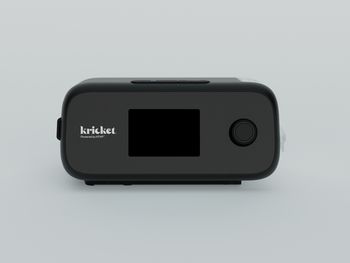
The benefits of automated EHR data extraction
How extracting continuity of care data can close care gaps and improve physician connectivity
Physicians have faced a number of key technical
Unfortunately,
With the economy reopening and people returning to work/education obligations and social activities, the spread of COVID-19 is expected to surge. Enhanced
Given today’s enormous healthcare challenges, a growing number of physicians recognize the value of seamless, automated patient health data exchange and its contribution to overcoming issues related to transparency and communication.
Enhanced Clinical Decision-Making
Optimal point-of-care solutions offer innovative capabilities as a one-source, payer-agnostic platform that enables physicians to rapidly access, extract and electronically export patient data from a meaningful use-certified EHR to a continuity of care document (CCD).
Physician practices should look for an innovative approach that enhances workflows and clinical decision-making. This can virtually eliminate human transmission errors which can result from faxing and uploading documentation for supplemental data.Most importantly, this automated approach closes quality care gaps in near real-time. Ideally, the solution should also offer secure, electronic transmission of a patient’s vital medical information, which is especially critical during the COVID-19 pandemic.
This is an opportunity to regularly extract data created in a physician’s EHR and provide a patient’s full clinical history, including actionable insights on diagnoses, open care gaps, inpatient/outpatient visits and prescriptions at the point of care. Effective CCD file extraction eliminates the 30-60-day lag from claims systems to close care gaps, creates action plans and drives bi-directional communication between the payer and physician.
CCDs also assist in Transitions of Care management. Typically, when patients switch health plans, claims history does not follow. CCDs improve referral and authorization time and provide a patient’s history, all of which helps to reduce patient and provider abrasion/burden and leads to faster care.
Furthermore, when it comes to risk adjustment, the CCD process helps to support revalidation, suspicion of new conditions and documentation of medical diagnosis that were missed simply because a clearinghouse failed to clear the diagnosis when it was billed.
With this in mind, a point-of-care solution that also offers real-time data insights captured from disparate sources, allowing 360-degree visibility into the patient’s health status based on information from EHRs, health information exchanges (HIEs), claims, labs, pharmacy and hospital sources can reduce the need for multiple platforms. Through the aggregation of data from these sources, users gain real-time data transparency and patient-level drill-down dashboards. These dynamic dashboards also provide collaboration opportunities to break down departmental silos.
Thinking Ahead to Value-Based Care
The COVID-19 pandemic has been shining a light on the challenges of quality measurement. Implementing the recommendations for improvement will require a higher level of planning and coordination because the risks of failing to do so are significant.
Physicians who want their practices to remain sustainable are moving toward value-based models and embracing the tools that provide the most efficient high-touch care, generate improved outcomes and enable them to improve financial performance.
Quality improvement programs are a critical part of value-based care because they systematically collect information from physicians or patients with the aim of assessing the quality of care provided and improving treatment outcome or efficiency. During the shift to value-based care, it’s important for physicians to move carefully and thoughtfully, choosing a system that
Now more than ever, physicians across the country need this level of innovative technology solution to drive data interoperability, optimize care quality, reduce administrative burden, enhance value-based care initiatives and improve financial performance and communication.
Phil Giarth is director for provider engagement at DataLink.
Newsletter
Stay informed and empowered with Medical Economics enewsletter, delivering expert insights, financial strategies, practice management tips and technology trends — tailored for today’s physicians.








